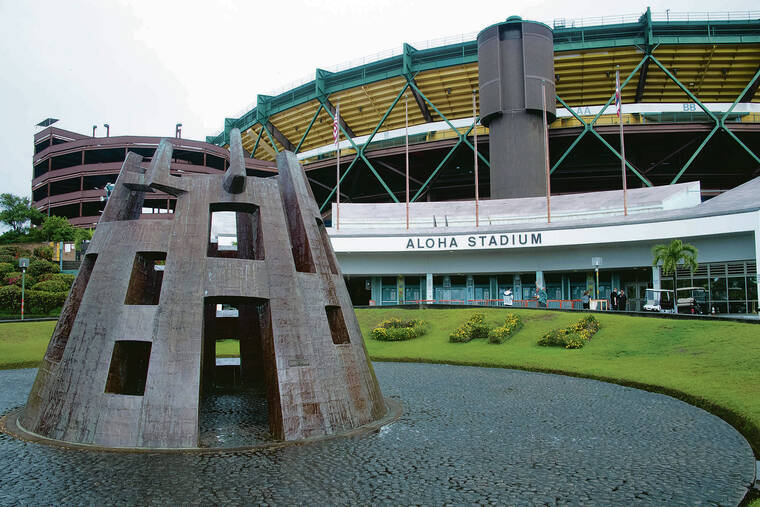Editorial: Aloha to Aloha Stadium

CRAIG T. KOJIMA / CKOJIMA@ STARADVERTISER.COM
Today, ticket-holding members of the public will enjoy a last visit, with first-time permission to explore previously private corridors, locker rooms and other behind-the-scenes spaces in the stadium. The stadium opens its doors for “Aloha from Aloha Stadium” from 10 a.m. to 9 p.m.
Today, a final public opening of the “old” Aloha Stadium takes place before the 48-year-old, rusting structure is dismantled — a process the state hopes can be completed by 2024.
Now, observers can compile a list of lasts, as well as firsts, and greatests.
On Feb. 20, The Great Aloha Run ended at the “old” Aloha Stadium for the last time, although runners finished in the parking lot rather than on the field inside.
On Jan. 27, 1980, the first of 34 Pro Bowl games to take place at the Halawa stadium was played.
On Sept. 13, 1975, the first sporting event and first college football game in the stadium was held, between Hawaii and Texas A&I.
For many, the greatest event ever to take place at Aloha Stadium happened on Dec. 1, 2007. It was the University of Hawaii’s final football game of the regular season, and UH finished undefeated with a comeback victory against the University of Washington. Hawaii went on to the Sugar Bowl in New Orleans.
Don't miss out on what's happening!
Stay in touch with breaking news, as it happens, conveniently in your email inbox. It's FREE!
For others, perhaps the greatest was blazing pop star Bruno Mars, raised in Hawaii, who made history selling out three stadium concerts in November 2018; or other stadium shows, including U2 (2006), the Rolling Stones (1998) and Michael Jackson (1997).
Today, ticket-holding members of the public will enjoy a last visit, with first-time permission to explore previously private corridors, locker rooms and other behind-the-scenes spaces in the stadium. The stadium opens its doors for “Aloha from Aloha Stadium” from 10 a.m. to 9 p.m. Tickets, if any remain, are $7 to $10 at aloha-stadium.eventbrite.com Opens in a new tab.
Do not fear: The Aloha Stadium Swap Meet & Marketplace is not ending. It will continue at its current location in the outer stadium circle for several months until construction nears at the stadium site, then move to another location within the parking area.
According to the state’s New Aloha Stadium Entertainment District website, construction on a new stadium is also targeted for 2024.
Within weeks, Gov. Josh Green is expected to release his plan to replace the stadium with a smaller facility. It’s hoped this can be completed by 2027.
The stadium rebuild would be part of a public- private partnership, enlisting private developers to construct the state-owned stadium, housing and more. A focus of the governor’s plan is to add a substantial number of new housing units to the “entertainment district.”




